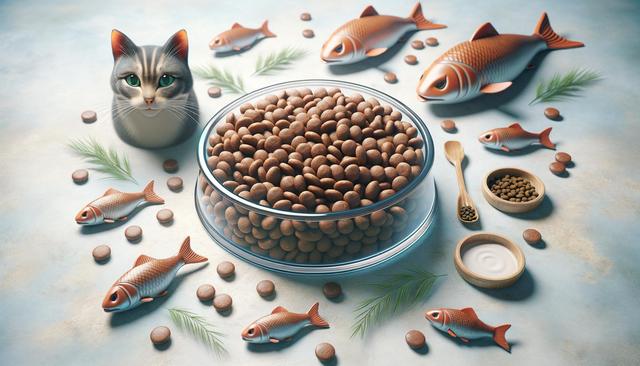Understanding Your Cat’s Nutritional Needs
Cats are obligate carnivores, meaning their diet must be rich in animal-based proteins to maintain optimal health. When selecting dry cat food, it’s essential to consider the specific needs of your feline companion, such as age, activity level, and any health conditions. For example, growing kittens require different nutrition than adult or senior cats. The best dry food for kittens typically includes higher caloric content, extra protein, and added vitamins and minerals to support rapid growth and development.
For adult cats, especially those who are less active or live indoors, controlling calorie intake while still offering balanced nutrition is key. Dry cat food for indoor cats often contains fewer calories and added fiber to help with hairball control and digestion. Senior cats may benefit from food that supports joint health and kidney function, with adjusted protein and phosphorus levels. Understanding these nuances helps in selecting the most appropriate diet for your cat’s stage of life and lifestyle.
Benefits of High Protein Dry Cat Food
Proteins play a critical role in maintaining your cat’s muscle mass, immune function, and overall energy. High protein dry cat food is particularly beneficial for active cats or those that need to gain or maintain weight. These formulas often feature meat or fish as the first ingredient and avoid excessive fillers, like corn or wheat, which can sometimes lead to digestive issues or allergies in sensitive cats.
Some benefits of high protein dry food include:
- Support for lean muscle development
- Improved coat condition and skin health
- Better energy levels and immune support
When choosing a protein-rich option, look for clear labeling of meat sources and a balanced ratio of fat and carbohydrates. Maintaining this balance ensures your cat gets the necessary nutrients without unnecessary additives.
Special Considerations for Sensitive Stomachs
Digestive issues are not uncommon in cats, and choosing the best dry cat food for sensitive stomachs can significantly improve their comfort and well-being. Cats with food sensitivities may exhibit symptoms like vomiting, diarrhea, or excessive gas. A limited-ingredient diet or one specifically formulated for sensitive digestion can help minimize these issues.
Features to look for in food targeting sensitive stomachs include:
- Easily digestible ingredients such as rice or oatmeal
- Single-source animal proteins
- Added probiotics and prebiotics for gut health
- Absence of artificial additives and common allergens
Transitioning to a new food should always be gradual to avoid further gastrointestinal upset. Monitor your cat closely during this time and consult with a veterinarian if symptoms persist.
Top Rated Dry Cat Food Brands and What Sets Them Apart
With so many options on the market, it can be overwhelming to choose the right product. Looking into top rated dry cat food brands can provide reassurance about quality and nutritional value. These brands often undergo rigorous testing and meet or exceed industry standards for safety and formulation.
What distinguishes these brands includes:
- Use of high-quality protein sources
- Transparent ingredient sourcing
- Formulas tailored to specific needs (age, health conditions, lifestyle)
- Positive reviews from both pet owners and veterinarians
While brand popularity is a helpful indicator, it’s important to read the ingredient list and nutrition information carefully. The best choice for your cat will depend on their individual preferences and health requirements.
Feeding Tips for Indoor Cats
Indoor cats typically have lower activity levels than their outdoor counterparts, making them more prone to weight gain and related health issues. Choosing the appropriate dry cat food for indoor cats can help manage their weight while still offering complete nutrition. These formulas often include added fiber to support digestion and help prevent hairballs, a common issue in indoor felines.
Helpful feeding tips for indoor cats include:
- Follow portion guidelines based on weight and age
- Use puzzle feeders or food-dispensing toys to encourage activity
- Provide fresh water daily to support hydration
- Monitor weight regularly and adjust food intake as needed
Feeding your indoor cat a diet designed for their lifestyle can enhance their long-term health and reduce the risk of obesity-related diseases such as diabetes and arthritis.
Conclusion: Making an Informed Choice for Your Cat
Choosing the right dry cat food is a key part of maintaining your cat’s overall health and happiness. Whether you’re looking for the best dry food for kittens, high protein dry cat food, or the best dry cat food for sensitive stomachs, understanding your cat’s unique needs is the first step. Exploring top rated dry cat food brands and selecting formulas tailored for dry cat food for indoor cats can help ensure your feline receives the nutrition they require. Always consider consulting with a veterinarian to tailor the diet specifically for your cat’s health profile. With thoughtful selection and proper feeding practices, you can support a long, healthy, and happy life for your pet.




Leave a Reply